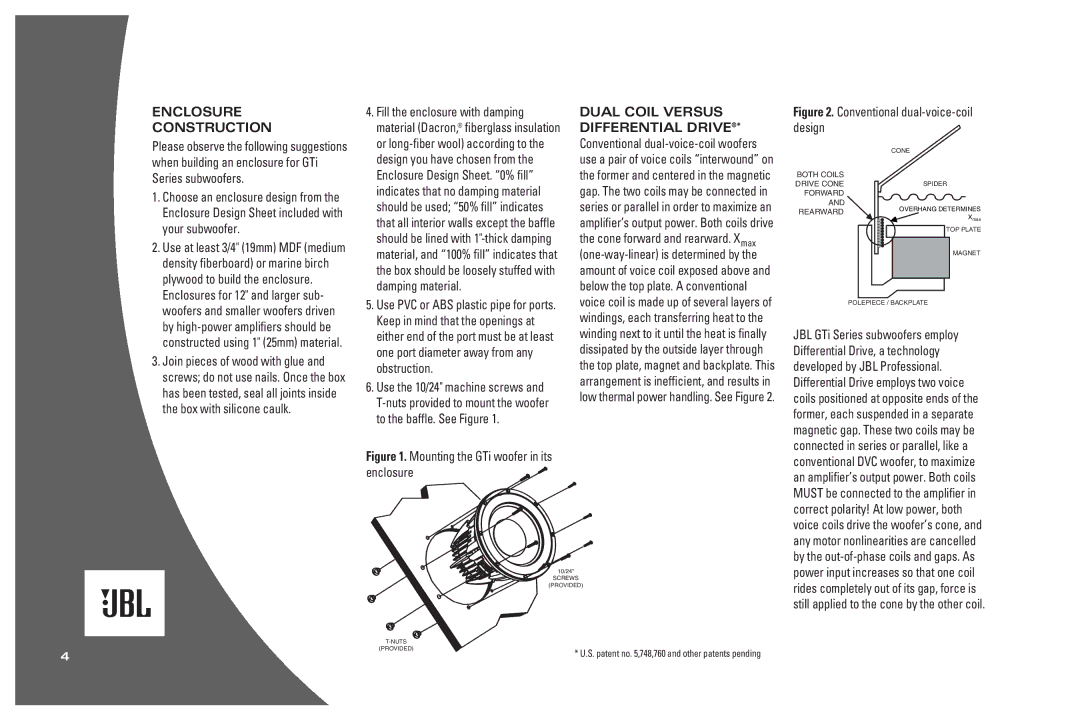MkII automotive, MkII W10GTi, MkII W15GTi, MkII W12GTi specifications
JBL, a leader in audio technology, has long been synonymous with high-performance sound systems. Among its stellar offerings are the MkII series subwoofers, including the W12GTi, W15GTi, and W10GTi. These subwoofers represent a fusion of superior engineering, innovative technology, and durable construction, making them ideal for automotive enthusiasts seeking to enhance their sound experience on the road.The JBL MkII W12GTi boasts a 12-inch cone driver, designed for deep and powerful bass response. It's constructed with a patented dual voice coil to provide effective power handling while minimizing distortion. This subwoofer features JBL’s signature GTi technology, which includes a high-temperature voice coil to ensure longevity and performance under heavy usage. Its sleek design includes a rigid aluminum frame that helps reduce unwanted vibrations, enhancing sound clarity and precision.
Meanwhile, the MkII W15GTi, with its larger 15-inch driver, takes bass amplification to another level. The W15GTi is engineered for even deeper low-frequency output, making it perfect for genres that rely heavily on bass. It incorporates advanced cooling technology to dissipate heat effectively, allowing for extended playtime without compromising performance. Additionally, its robust construction ensures resilience to the demanding conditions of automotive use.
For those who prefer a more compact solution without compromising sound quality, the MkII W10GTi serves as an excellent choice. Featuring a 10-inch driver, this subwoofer is versatile and delivers impressive bass response even in smaller systems. The W10GTi utilizes a unique cone design to enhance sound dispersion, ensuring that every note is heard clearly. Its tight construction optimizes the management of air within the enclosure, further improving acoustic performance.
All three models in the MkII line share essential technologies, such as JBL’s patented Slipstream ports, which reduce port noise and enhance airflow, leading to cleaner bass output. Additionally, they feature adjustable frequency response, allowing users to customize their listening experience according to personal preferences and vehicle acoustics.
In summary, the JBL MkII W12GTi, W15GTi, and W10GTi subwoofers are exceptional products for automotive sound systems. Their advanced technologies, impressive power handling capabilities, and robust designs make them ideal choices for audiophiles and casual listeners alike, setting a new standard in mobile audio performance. Whether you’re looking for deep rumbling bass or a balanced audio output, JBL’s MkII series delivers unparalleled value and performance for the modern car audio enthusiast.

